Research
I have a Ph.D in Ethnomusicology from SOAS, University of London (2017), an M.A. in Ethnomusicology (UBC 2008), and a B.A. in Interdisciplinary Studies (UBC 2006). My research focusses on the cultural study of musical instruments, multi-sited ethnography, historiography, music revival, and transnational subcultures and scenes.
While the jew’s harp has been one of the most popular musical instruments in Europe since the Middle Ages, it has long been seen as an object of little value, sitting at the junctions between classical and folk, public art and private enjoyment, and urban and rural. My research demonstrates how the jew’s harp and the study of “unpopular” music can be used to critically engage with the core concepts of value, virtuosity, and productivity at the centre of Western musical discourse.
Books
Coggins, Owen, and Deirdre Morgan. (forthcoming). Jew’s Harps & Metal Music: Folk Traditions in Global Modernity. Routledge.
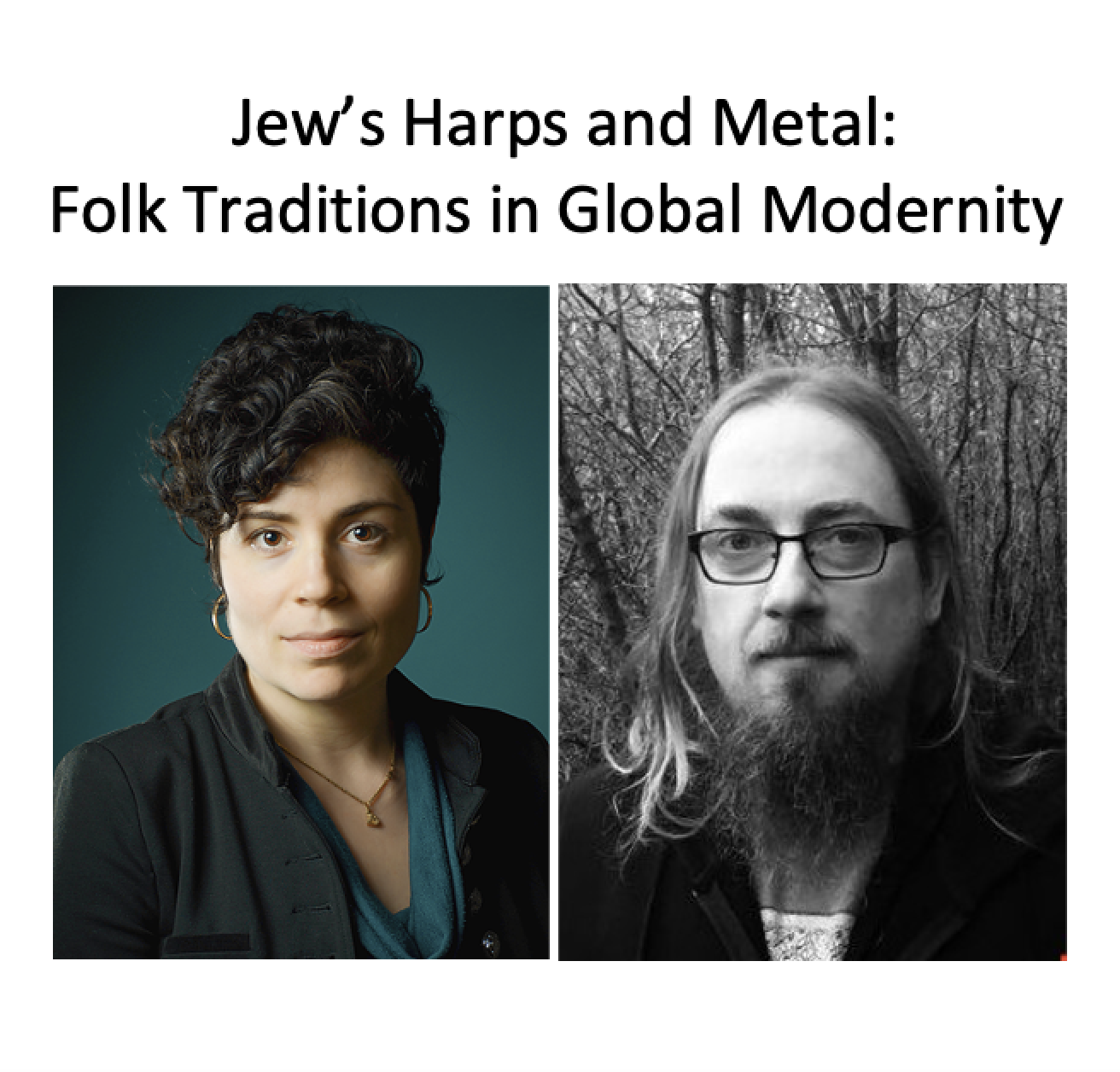

MA Thesis
Morgan, Deirdre. 2008. "Organs and bodies: The Jew’s harp and the anthropology of musical instruments". MA thesis, University of British Columbia.
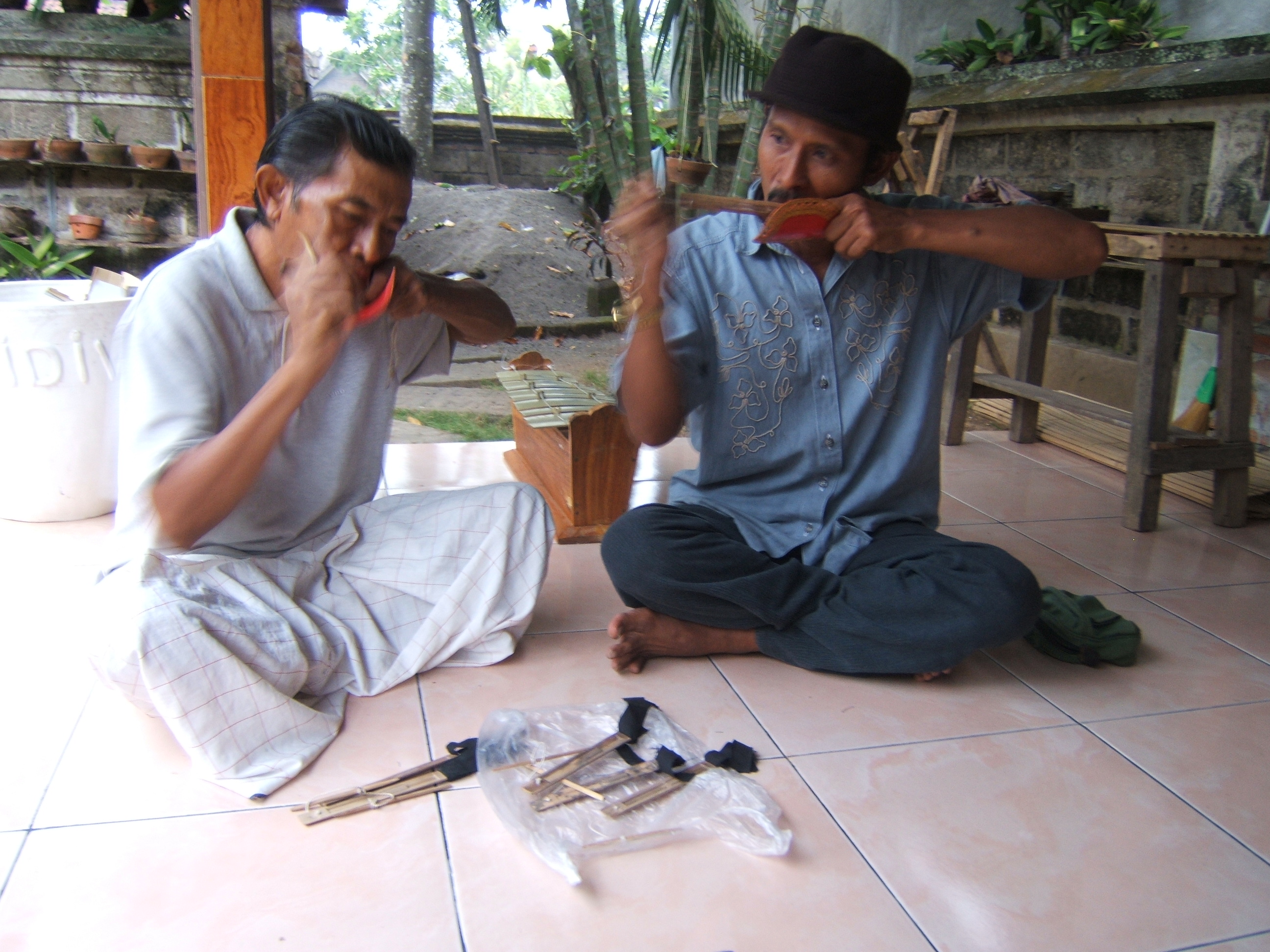
Peer-Reviewed Articles
Morgan, Deirdre. 2018. “Cracking the Code: Recordings, Transmission, Players, and Smiths in the Norwegian Munnharpe Revival.” Ethnomusicology Forum 27(2): 184-212. https://www.tandfonline.com/doi/full/10.1080/17411912.2018.1506942
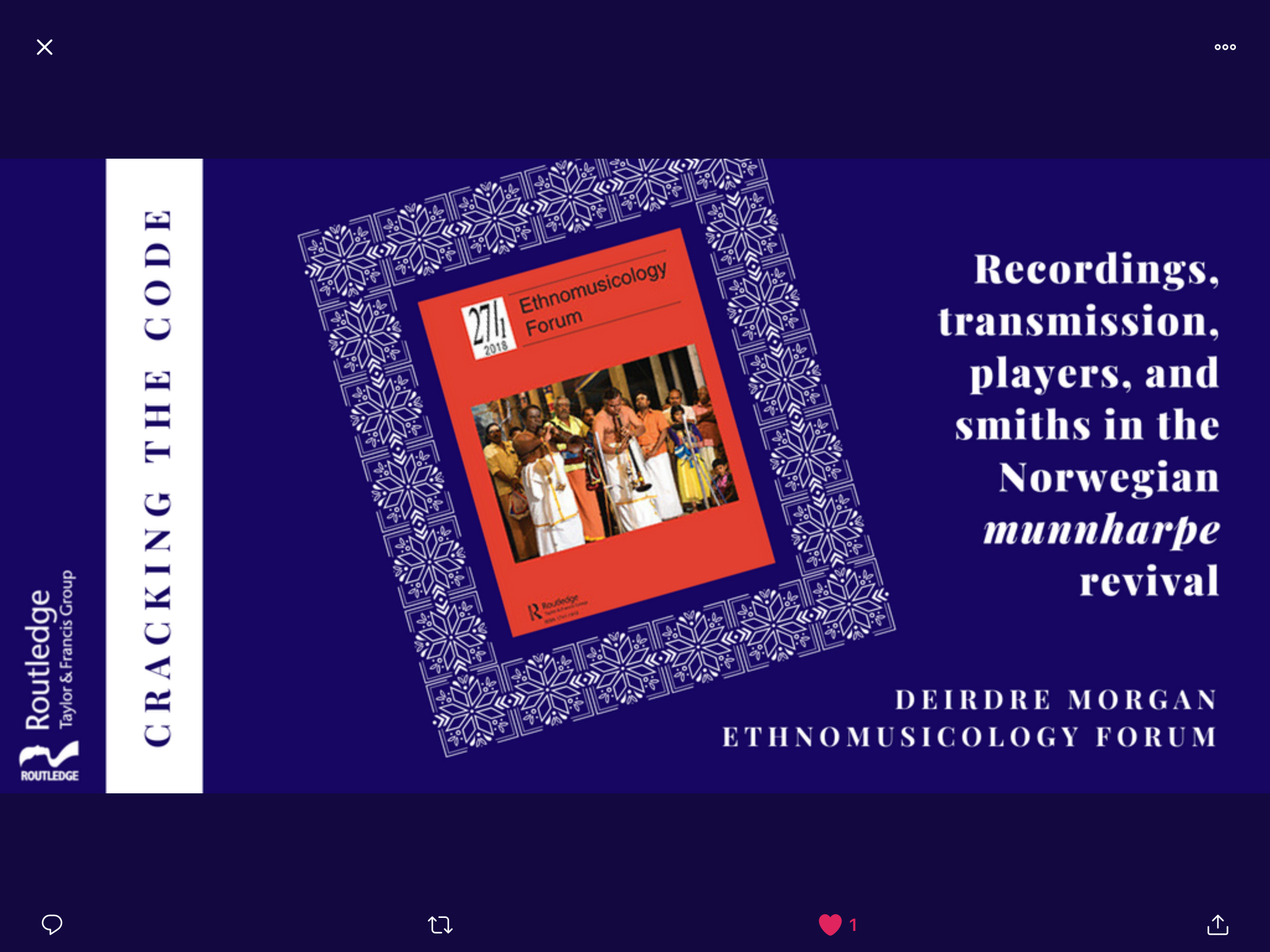
Peer-Reviewed Book Chapters
Morgan, Deirdre. 2023. “Arcadian Tones: The Rise, Fall, and Rebirth of the Austrian Maultrommel.” In Shaping Sound and Society: The Cultural Study of Musical Instruments, edited by Stephen Cottrell, Routledge: 189-211.
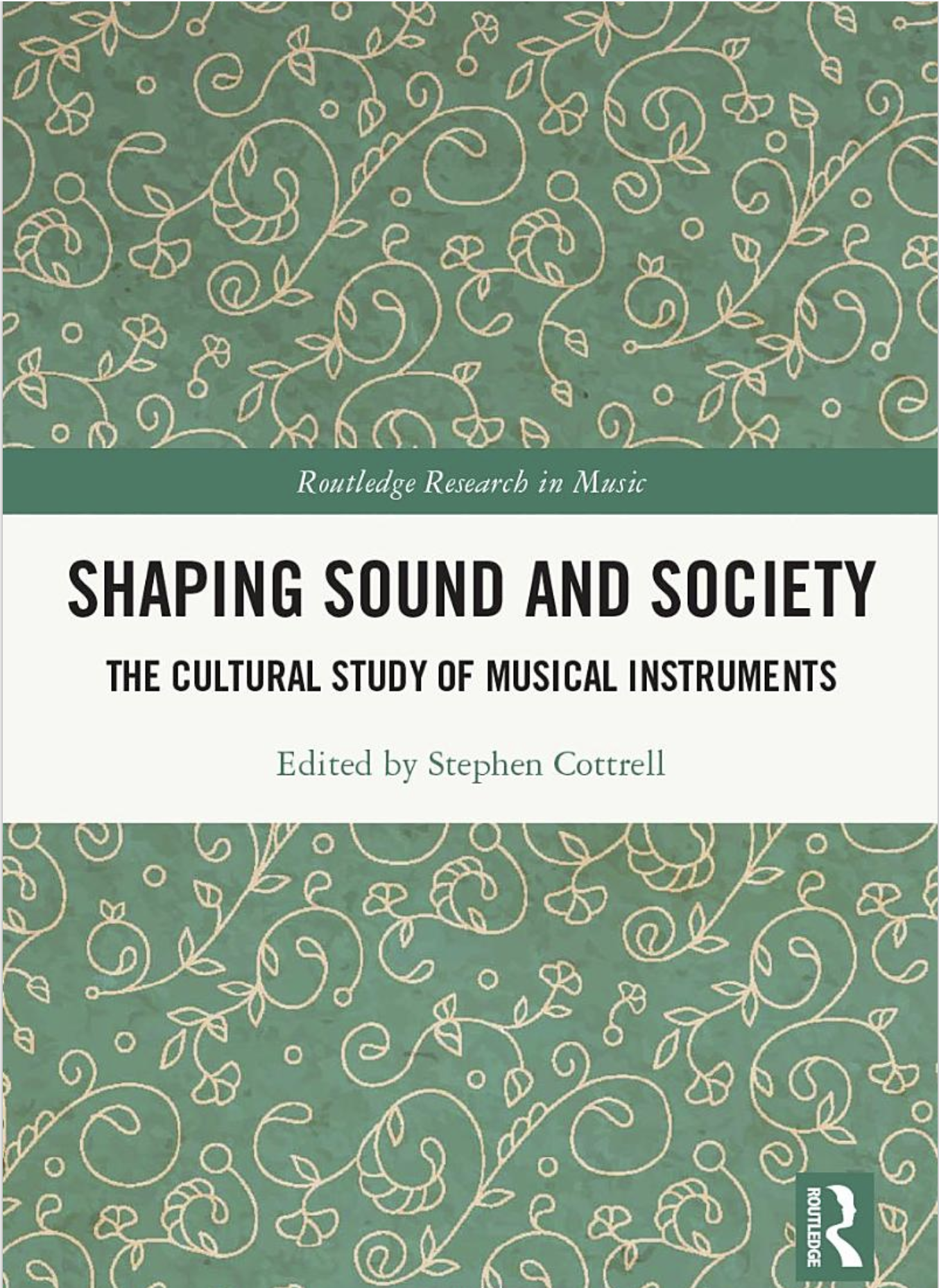
Morgan, Deirdre. 2016. “Excavating heritage: The Archaeology of Revival in the Jew’s Harp Traditions of Norway, Austria, and Sicily.” In Studien zur Musikarchäologie X, edited by Ricardo Eichmann and Lars-Christian Koch, 75-79. Rahden/Westfalen.: Verlag Marie Leidorf.
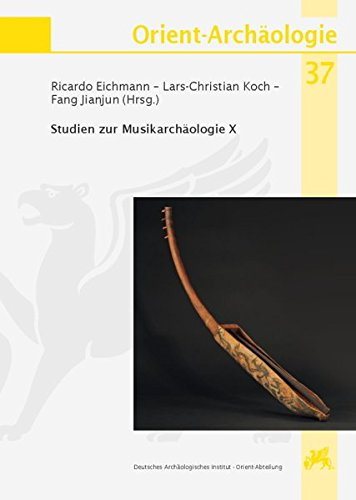
Book Reviews
Morgan, Deirdre. 2017. Review of The Jew’s Harp in Britain and Ireland, by Michael Wright. Ethnomusicology Forum 26(2): 271-273. https://www.tandfonline.com/eprint/jSgdBqKzhniDbRkpXHHz/full
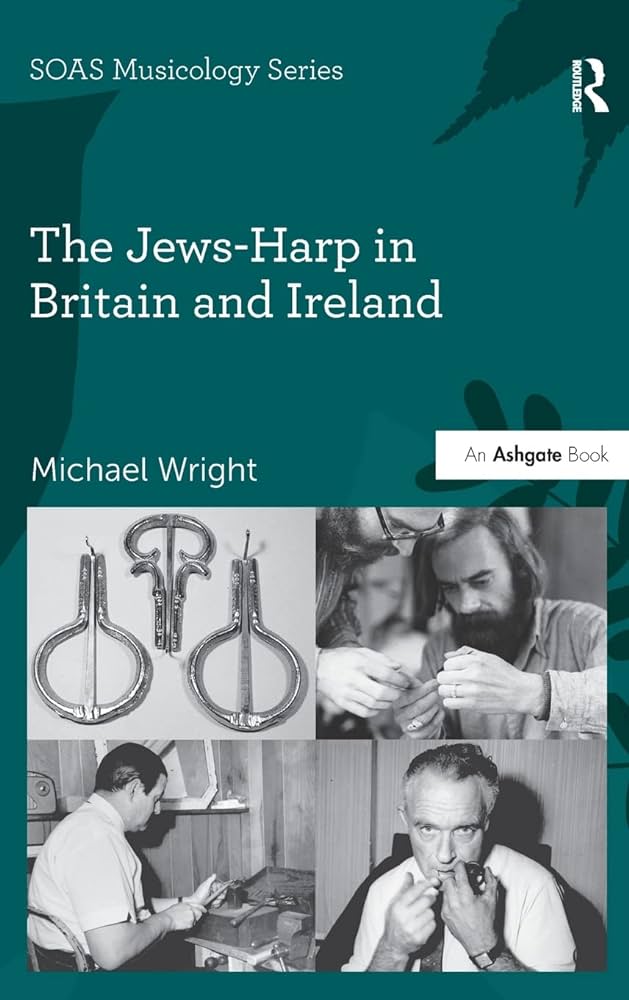
Other Writing
Morgan, Deirdre. 2018. “Splendor Amsterdam’s Vision for a Sustainable Music Space.” VIM House, September 21, http://vimhouse.ca/splendor-amsterdams-vision-for-a-sustainable-music-space/

I was honoured to be commissioned to write a freelance article for VIM House, the Vancouver Independent Music Centre, about an artist-run centre in Amsterdam.In a time when the social media feeds of Vancouver musicians are rife with posts from peers leaving the city to move to Vancouver Island or the Sunshine Coast in pursuit of affordable living, those left behind are faced with the narrative that Vancouver is becoming a cultural ghost town. To counter this dystopian vision and offer potential frameworks for supporting musicians who choose to stay in the city, VIM House hosted two discussions—at Gold Saucer Studio and at Djavad Mowafaghian World Art Centre at SFU Woodwards—in July 2018 with David Dramm, Anne La Berge and Norman van Dartel of Splendor, an artist-driven music space in Amsterdam. The three speakers provided tantalizing glimpses of collective effort and self-sufficiency, offering plenty to consider for a Vancouver music scene struggling to find its place.
Conference Presentations
2022 “Jew’s Harps in Underground Metal and the ‘Inverse Shock’ of Resistance Discourses between Global South and North.” Presented with Owen Coggins at the International Society for Metal Music Studies Biennial Research Conference, June 8.
2019 “Decolonizing British and North American Ethnomusicology/ies.” SEM-sponsored roundtable, Society for Ethnomusicology Conference, Bloomington, November 9.
2019 “I’m Up Next: Using Performance as a Fieldwork Strategy at Music Festivals.” British Forum for Ethnomusicology Conference, Aberdeen, April 14.
2018 “A Mere Boy’s Plaything: Children, Gender, and the Jew’s Harp.” Society for Ethnomusicology Conference, Albuquerque, November 18.
2018 “Archaic Fusion: An Analysis of Norwegian Munnharpe Style and Repertoire.” Analytical Approaches to World Music, Thessaloniki, June 26.
2018 “Unworthy Objects: The jew’s harp and discourses of value in European Music.” British Forum for Ethnomusicology, Newcastle, April 13. Also presented at the Northwest Chapter Conference of the Society for Ethnomusicology, Bellingham, March 3.
2017 “Rustic Chivalry: Heroes, outlaws, and the Sicilian marranzano.” International Council for Traditional Music, Limerick, July 15. Also presented at the Society for Ethnomusicology, Washington D.C., November 10, 2016.
2016 “The Anatomy of Style: Playing technique as musical artifact.” AMS Popular Music Study Group, American Musicological Society & Society for Music Theory, Vancouver, November 3.
2016 “Speaking in Tongues: A multi-sited ‘insider’ ethnography of the international jew’s harp revival.” Researching Music: Interviewing, Ethnography, and Oral History. Institute for Musical Research, London, June 6.
2015 “The Death of the Drone: The rise, fall, and rebirth of the Maultrommel in Central Europe.” Society for Ethnomusicology, Austin, Texas, December 3.
2015 “Hidden Creators: The role of blacksmiths in the international Jew’s harp revival.” International Council for Traditional Music, Kazakh National University of Arts, Astana, July 21.
2015 “Revival/Continuation: Paradigms of transmission and boundaries of knowledge in the Norwegian munnharpe smithing tradition.” British Forum for Ethnomusicology & Société Française d’Ethnomusicologie, Musée du Quai Branly, Paris, July 4.
2015 “The imagined community incarnate: Virtual connectedness and co-presence in the international jew’s harp revival.” Anthropology in London, University College London, June 15.
2015 “The Norwegian munnharpe revival: A dialogue between material and intangible culture.” Horniman Museum & Royal Anthropological Institute, London, March 26.
2014 “Cracking the Code: The role of archival recordings in the revival of the Norwegian munnharpe.” Society for Ethnomusicology, Wyndham Grand Downtown Hotel, Pittsburgh, November 13.
2014 “Excavating Heritage: The Jew’s harp revivals of Norway, Austria, and Sicily.” International Study Group on Music Archaeology 9th symposium, Ethnological Museum, Berlin, September 13.
2014 “Breathing Life to Iron: Audio recordings and the (re)making of the Jew’s harp virtuoso.” British Forum for Ethnomusicology & Analytical Approaches to World Music joint conference, SOAS, University of London, July 1.
2013 “Harnessing Participation: Social media as living cultural archive in the international Jew’s harp community.” British Forum for Ethnomusicology and ICTM-Ireland joint conference, “Ethnomusicology in the Digital Age”, Queen’s University, Belfast. April 6.
2012 “Hearing Balinese Genggong: the Jew’s harp and the anthropology of musical instruments.” British Forum for Ethnomusicology, Pitt-Rivers Museum, Oxford. November 24.




